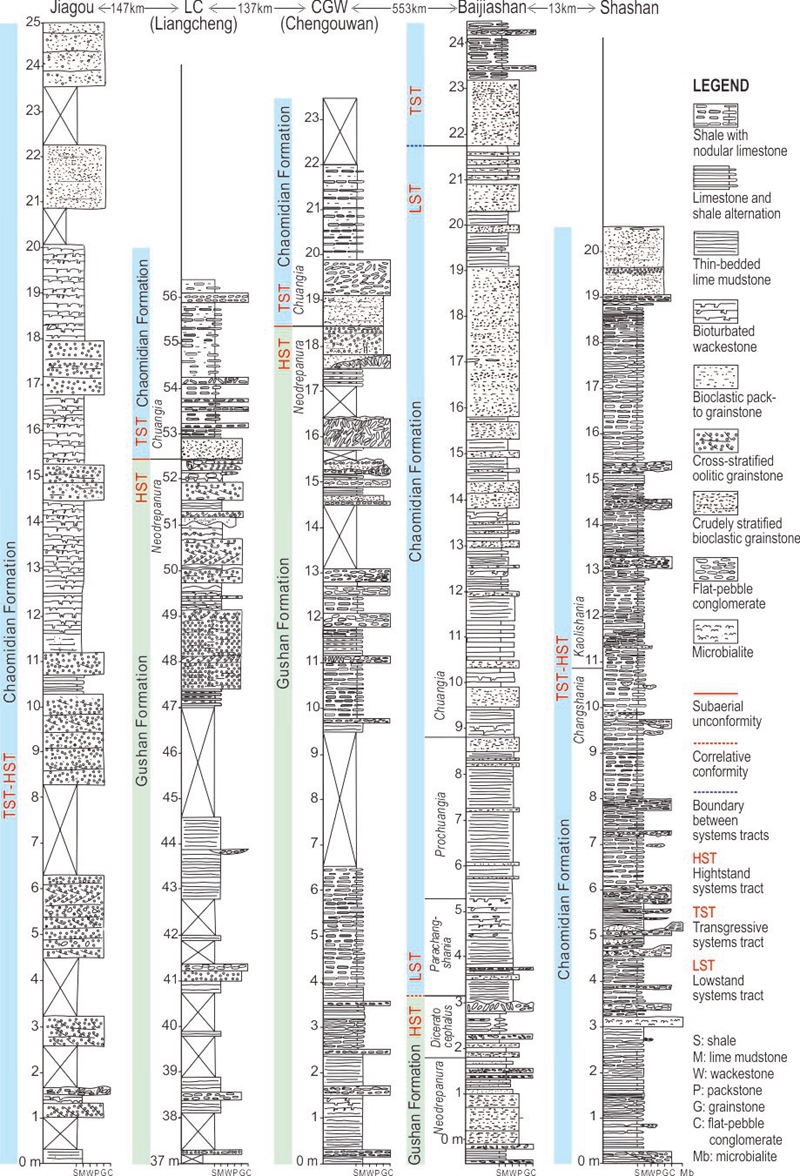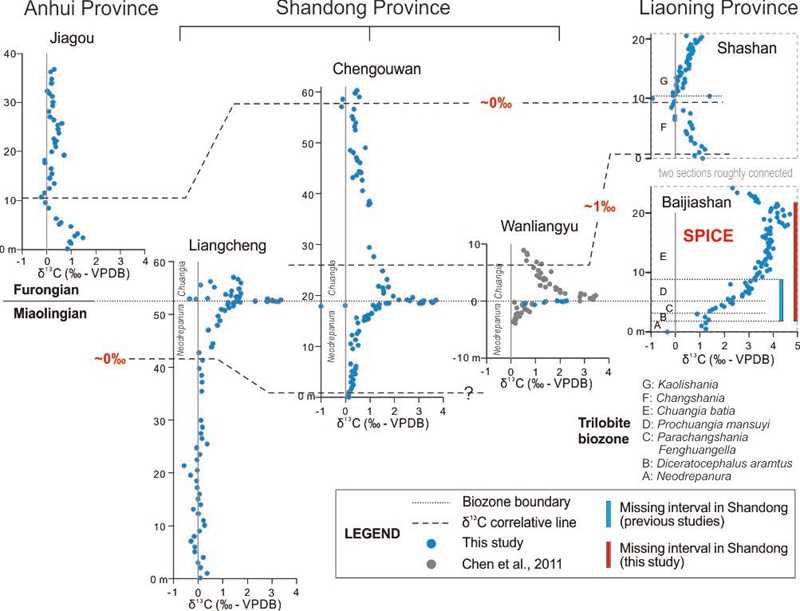The Steptoean Positive Carbon Isotope Excursion (SPICE) is a large excursion (by ~5‰) in marine carbon isotope (δ13C) records during the middle-late Cambrian transition, which is documented worldwide. The SPICE is hypothesized to be caused by a global carbon cycle perturbation (enhanced global carbon burial), which is accompanied with dramatic marine anoxia and euxinia. The SPICE event is coincident with and ascribed to, most likely the second phase of, the Dresbachian (or end-Marjuman) extinction event that slashed approximately 40% of marine genera during the early stage of life evolution. Recent studies imply that the synchroneity and magnitude of the SPICE may be controversial, which hampers proper interpretation on stratigraphic correlation and biogeochemical cycling.
In order to test the spatial variation of the SPICE, Prof. CHEN Jitao from Nanjing Institute of Geology and Palaeontology, Chinese Academy of Sciences, in collaboration with his colleagues, studied six outcrop sections across a ~700 km transect along the eastern North China Platform by using sedimentology, trilobite biostratigraphy and carbon isotopes methods in recent years. The research results have been published in the international journals Palaeogeography, Palaeoclimatology, Palaeoecology.
Their study found that the SPICE is present in all the studied sections, but showing different features regarding the duration and magnitude. An abrupt increase in δ13C from ~1.5‰ to 3.5‰ occurs in three Shandong sections, with maximum value present only in a thin (0.5-1.2 m thick) transgressive lag deposit (crudely wave stratified, bioclastic grainstone). In contrast, the δ13C record of the Baijiashan and Shashan sections in the Liaoning region displays a gradual increase (~20 m thick) from ~1.5‰ to the maximum value of 4.7‰. Both facies analysis and trilobite collections suggest that the spatial variation of the SPICE in the North China Platform most likely resulted from missing of sedimentary record (with high δ13C values) in the Shandong sections as a result of erosion and non-deposition during sea-level lowstand, a possible coeval hiatus prior to the Sauk III transgression in the Laurentian basins.
This is a case study that utilizes an interdisciplinary approach involving sedimentology, stratigraphy, and geochemistry to better understand geological issues. This study reports the complete record of SPICE from the North China Platform, and provides fundamental basis for future global correlation of SPICE.
The study was supported by the Strategic Priority Research Program of Chinese Academy of Sciences and the National Natural Science Foundation of China.
Reference: Wang, Z., Chen, J.*, Liang, T., Yuan, J., Han, C., Liu, J., Zhu, C., Zhu, D., Han, Z.*, 2020. Spatial variation in carbonate carbon isotope during the Cambrian SPICE event across the North China Platform. Palaeogeography, Palaeoclimatology, Palaeoecology, 546, 109669. https://doi.org/10.1016/j.palaeo.2020.109669

Detailed sedimentary loggings of the Miaolingian-Furongian boundary successions in the eastern part of the North China Platform

Representative facies of the Miaolingian-Furongian boundary successions in the eastern part of the North China Platform

Representative trilobites of the Miaolingian-Furongian boundary successions in the eastern part of the North China Platform

Correlation of carbonate δ13C records of the upper Miaolingian to the lower Furongian succession from the eastern part of the North China Platform
